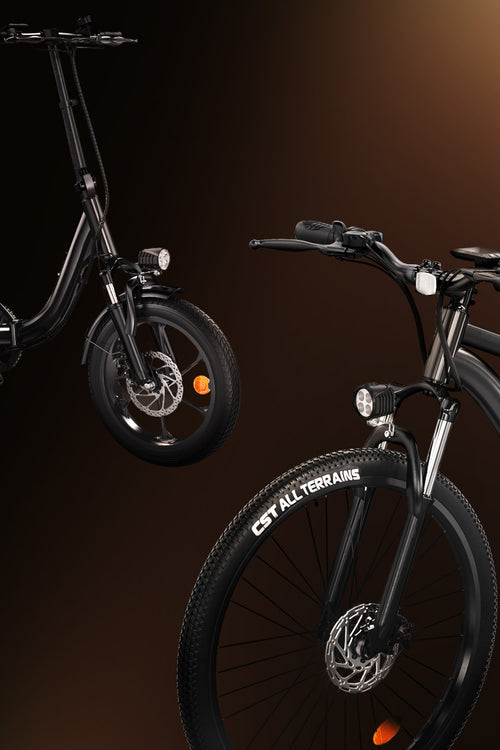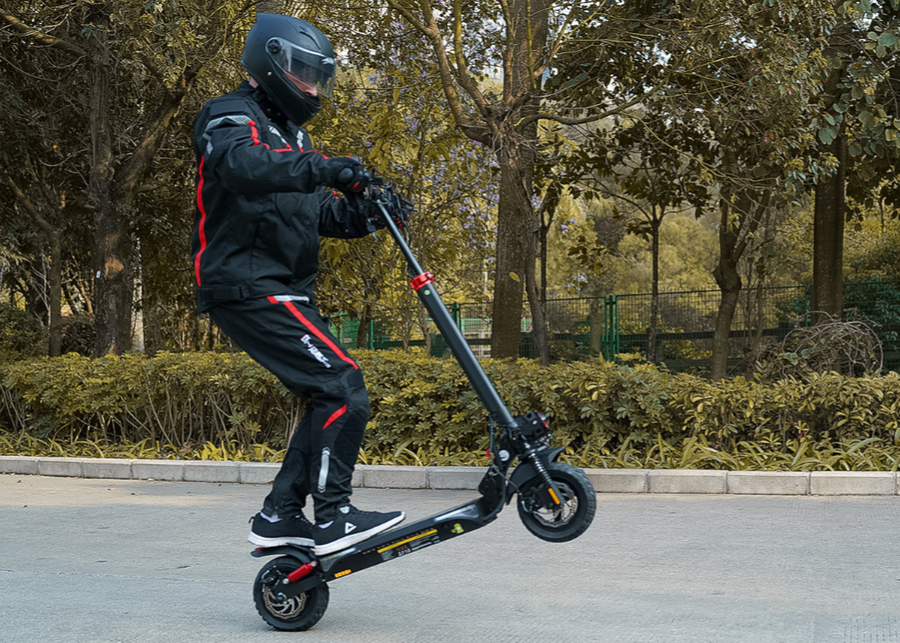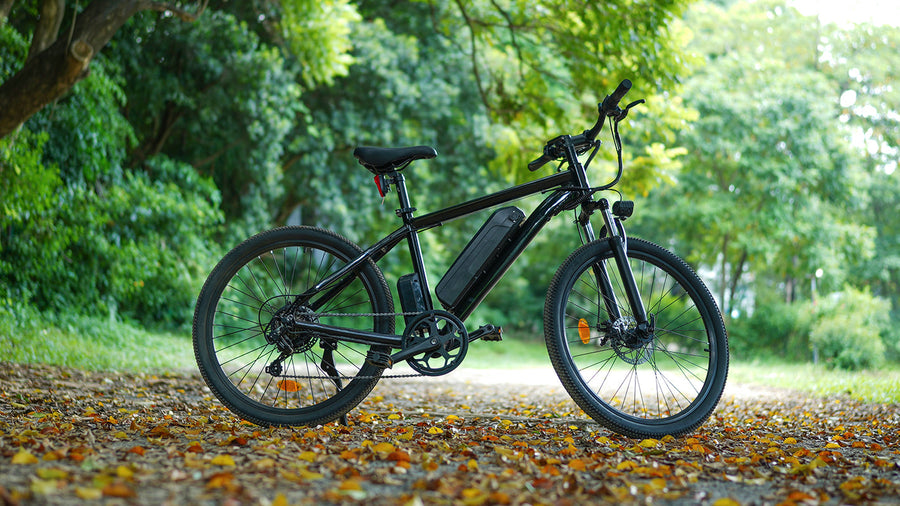
How Do Electric Scooters Impact the Environment?
Electric scooters have surged in popularity as a convenient and eco-friendly mode of transportation. They offer a viable alternative to traditional vehicles, especially in urban areas, where traffic congestion and pollution are major concerns. But how exactly do electric scooters impact the environment? Let’s delve into their environmental footprint, the benefits they offer, and ways to make their use even more sustainable.
Are E-Scooters Environmentally Friendly?
In short, when compared to other modes of transportation, e-scooters are quite environmentally friendly. They do not pollute the air during rides thanks to their rechargeable batteries, which result in zero emissions.
However, the entire value chain from production to recycling does have an environmental impact. For example, 50% of the carbon footprint is linked to production. The production of the scooter battery accounts for about 20 grams of CO2-equivalent (CO2e) greenhouse gas emissions, while the scooter body and tires account for 184 grams of CO2e, totaling 204 grams of CO2e.
Although these numbers might initially seem high and are comparable to the production of an electric vehicle, e-scooters become much greener when we consider the Total Cost of Ownership (TCO). Compared to other alternatives, including cars, buses, and even public transportation, e-scooters have a lower overall environmental impact.

What are the Environmental Benefits of E-Scooters?
Despite some negative impacts, the benefits of riding an e-scooter far outweigh the drawbacks, contributing to its growing popularity across various demographics.
Reducing Emissions
One of the simplest ways to reduce your carbon footprint is by traveling emission-free. Electric scooters, powered by rechargeable batteries, produce no emissions, eliminating the need for trips to the gas station. Compared to gas-powered scooters, electric scooters are much more environmentally friendly.
Many cities are already imposing restrictions on gas-powered vehicles. With an electric scooter, you can bypass these restrictions. In some European countries, you might even qualify for government incentives for owning an electric scooter.
Saving Energy with Technology
Beyond their zero-emission operation, electric scooters often incorporate innovative energy-saving technologies that further enhance their environmental credentials. For instance, many models such as iScooter electric scooters utilize LED lighting systems, which provide ample illumination while consuming minimal energy. Additionally, the simpler mechanical design of electric scooters, with fewer parts than traditional gas-powered counterparts, results in less maintenance and a lower environmental impact.
Improving Urban Environments
The environmental benefits of electric scooters extend beyond their direct emissions and energy consumption. These compact vehicles also contribute to urban environments in tangible ways. Their near-silent operation reduces noise pollution, allowing riders to feel more connected to their surroundings without the disruptive rumble of internal combustion engines.

Furthermore, electric scooters, with their efficient size and single-passenger capacity, require significantly less space on roads and in parking lots compared to larger automobiles. This reduction in physical footprint helps alleviate urban crowding, making cities more livable and pedestrian-friendly.
How to Make Electric Scooters More Sustainable
As electric scooters continue to gain popularity, we must address their environmental impact and work towards making them a truly sustainable transportation solution. By taking a multi-faceted approach, we can maximize the eco-friendly benefits of e-scooters while minimizing their drawbacks.
- Extend Lifespan: One of the most effective ways to reduce the environmental impact of e-scooters is to extend their lifespan. Regular maintenance, proper usage, and responsible disposal can keep these vehicles in use for longer, reducing the need for frequent replacements and the associated resource consumption.
- Recycle Batteries: E-scooter batteries contain valuable materials that can be recycled. Implementing and adhering to comprehensive battery recycling programs can prevent harmful substances from entering the environment while also reducing the demand for new raw materials.
- Opt for Renewable Energy: Charging e-scooters with renewable energy sources, such as solar or wind power, can drastically cut down their carbon footprint. Encouraging the development and use of renewable energy infrastructure can amplify this benefit, making e-scooter charging a truly sustainable process.
- Smart Urban Planning: Cities can integrate e-scooters into their transportation networks through dedicated lanes and parking zones. This can reduce clutter, improve safety, and make e-scooter use more appealing and practical, ultimately increasing their adoption and environmental benefits.
- Consumer Awareness: Educating users about sustainable practices, such as proper charging, storage, and disposal, can enhance the eco-friendliness of e-scooters. Informed consumers are more likely to engage in behaviors that extend the life of their scooters and reduce environmental impact.
Conclusion
Although the production and recycling of electric scooters have environmental impacts, riding an e-scooter remains a greener transportation option compared to many alternatives. Additionally, we can implement strategies to make this mode of commuting even more eco-friendly.
iScooter E Scooter Collections:
Electric Scooter | Kids Electric Scooter | Electric Scooter for Adults | Electric Scooter with Seat | Off-Road Electric Scooter | Foldable Electric Scooter | Girls Electric Scooter | 1000W Electric Scooter | 2000W Electric Scooter | Boys Electric Scooter | Dual Motor Electric Scooter | Big Electric Scooter | Electric Scooter with Suspension | Lightweight Electric Scooter | Commuter E-Scooters | 3 Wheel Electric Scooter
iScooter E Bike Collections:
Foldable Electric Bike | Affordable Cheap Electric Bike | Electric Bike for Adults | Electric Motor Bikes | Trek Electric Bike | Fastest Electric Bike | Electric Road Bike | Full Suspension Electric Mountain Bike | Giant Electric Bike | Womens Ladies Electric Bike | Mens Electric Bike | Electric Bike with Throttle | Electric Gravel Bike | Electric Mountain Bike UK | Fat Tyre Electric Bike | Electric Hybrid Bike | Electric Motorised Bike | Electric Push Bike | 1000W Electric Bike | Cool Electric Bikes | Electric Off Road Bike | Pedal Assist Electric Bike | Good Electric Bikes | Small Electric Bike | Trek Electric Mountain Bike | 2000W Electric Bike | Full Suspension Electric Bike | Mini Electric Bike | Road Legal Electric Bike | Step Through Electric Bike
👍 Buying Guide | 🚴♂️ Riding Guide
📋 Feature Guide | ❓ Common problem
Product category
Electric Scooter
Cheap Electric Scooters for Adults | Fastest Electric Scooter | Kids Electric Scooter | Mini Electric Scooter































































Article tags :
Leave us a message